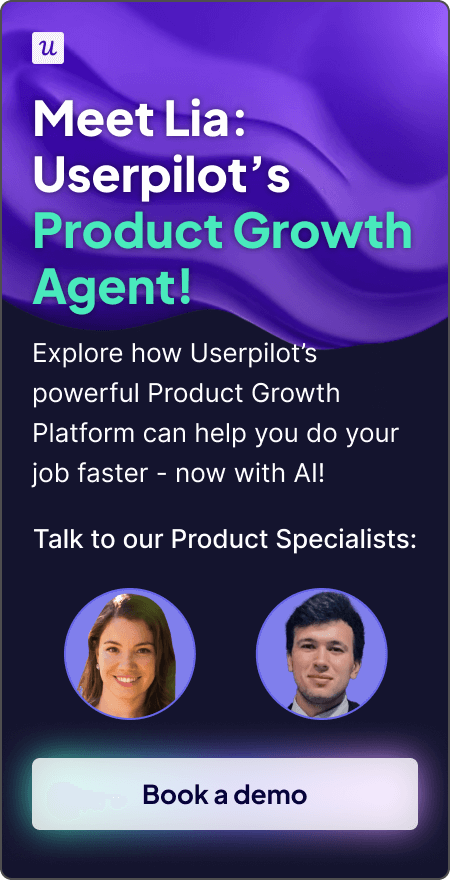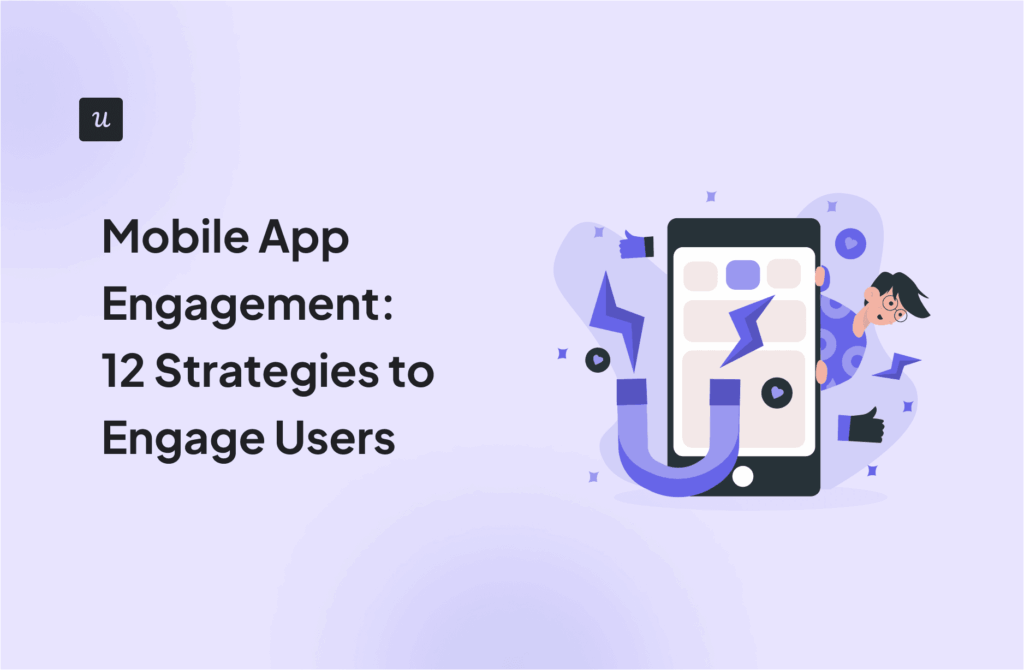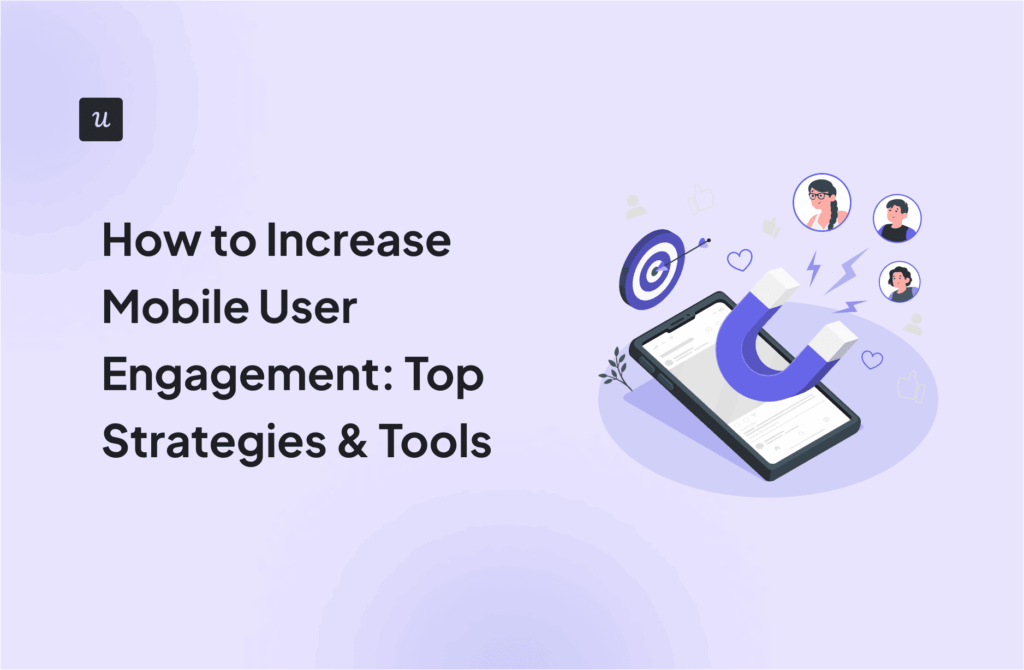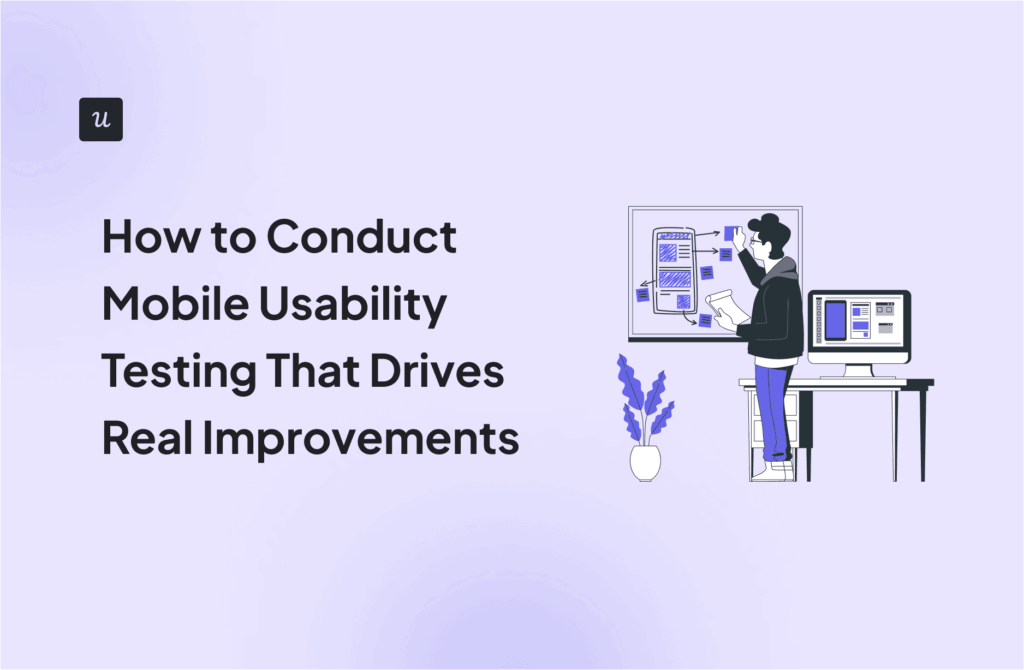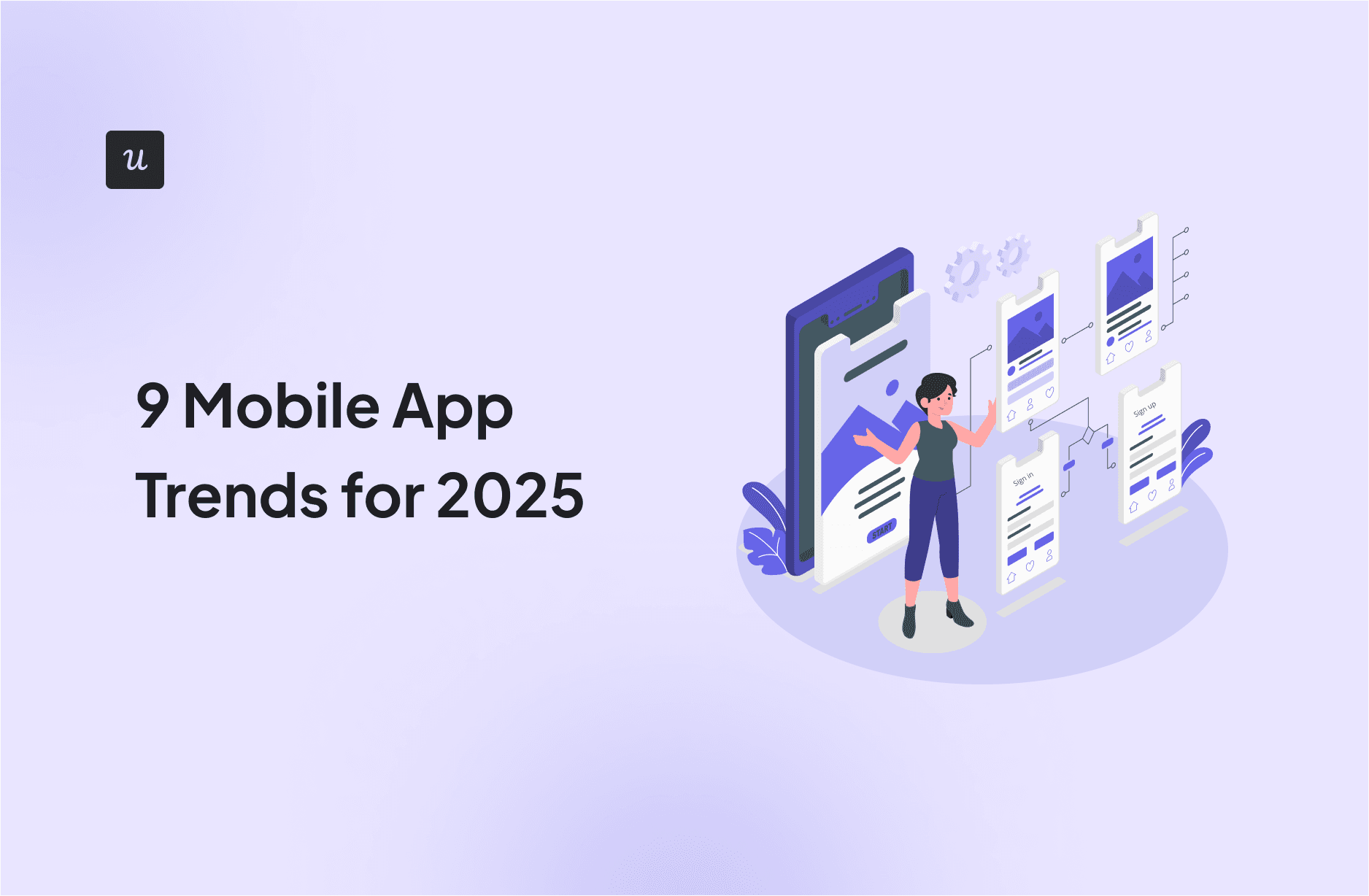
Mobile apps are evolving fast, but what’s changing even faster is what users expect from them. People don’t just want fast performance or flashy features. They want apps that understand them, personalize their journey, and grow with their needs.
At Userpilot, we help teams meet those expectations with better onboarding, in-app guidance, and personalized engagement. In this post, we’ll take you through 10 mobile app development trends and the mobile app development changes shaping 2025. Plus, tips on how to turn them into growth opportunities for your team!
Try Userpilot Now
See Why 1,000+ Teams Choose Userpilot
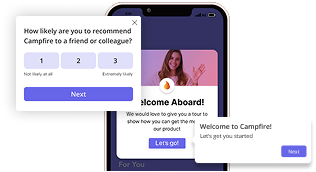
Mobile app development trends
In 2025, app developers are moving quicker, using smarter tools, and finding easier ways to create better experiences for users across all kinds of mobile devices.
5G is making real-time features smoother than ever. Over 1.5 billion people were using 5G by the end of 2023, and that number is still climbing.
AI, predictive analytics, and machine learning are helping apps feel more personal while taking some of the guesswork out of product decisions. And thanks to no-code platforms, you don’t always need a full dev team to ship something great.
Let’s look at the three latest trends shaping mobile app development this year.
AI and ML integration
AI isn’t just changing how apps behave. It’s also changing how teams build them.
In 2025, more companies are using artificial intelligence to improve product decisions and automate key parts of the user journey. From predictive analytics that help prioritize features to onboarding flows that adjust in real time, AI is at the center of many leading mobile app trends.
Take Amazon’s AI-powered chatbot, for example. It doesn’t just respond to questions. It also predicts what users might need and offers helpful answers right away, which leads to faster resolutions, less pressure on support teams, and a smoother experience overall.
We’re also seeing virtual assistants in productivity apps, health trackers, and even augmented reality tools that help users take action without needing step-by-step instructions.
Behind the scenes, AI is making app integration easier by detecting friction points, improving copy, and adapting features automatically.
So if your team is exploring advanced technologies, AI is one of the most practical ways to improve both your product and your process at the same time.
5G technology adoption
With the rollout of 5G, mobile development has unlocked a whole new level of app performance.
Apps can now deliver faster load times, smoother video streaming, and richer real-time features without lag.
This means that Netflix can now adjust video quality on the fly based on network strength, and Snapchat loads AR filters almost instantly, even on the move.
For product teams, this opens up the chance to build in real-time updates, high-resolution video previews, or interactive live features. And if you’re launching a media-heavy app or something built for foldable devices, 5G can help you deliver a fluid experience without any compromises.
No-code development platforms
No-code platforms are changing who can create apps and how fast they’re launched. Instead of waiting on full dev cycles, product and marketing teams can now build and test features with minimal technical help. From landing pages to full payment apps, no-code tools are making e-commerce app development faster and more accessible.
Canva recently rolled out its no-code website builder, which lets users design app-like experiences with zero code. Other tools like Glide and Thunkable help teams publish directly to the Google Play Store and Apple App Store, even integrating mobile payments for quick monetization experiments.
For teams in the mobile app development industry, this means less time blocked by dev bandwidth, and more room to iterate on onboarding, upgrade flows, or feature launches. It’s one of the biggest shifts in recent app development trends, especially if you’re a lean team or fast-moving startup.
The takeaway is that no-code isn’t just for prototypes anymore. Rather, it’s becoming a core part of how mobile applications are built and improved without slowing down growth.
Mobile app marketing trends
In 2025, the smartest marketing strategies are personal, automated, and built to scale.
Teams are using omnichannel automation to connect across mobile devices, partnering with influencers to connect with niche communities, and leaning into hyper-personalization to match real-time user behavior. There’s also a bigger push to fine-tune app functionalities (from upsell prompts to pricing models) for better conversion and retention.
Here are four mobile app marketing trends shaping how teams are growing apps today, without burning out their teams.
Omnichannel marketing automation
Your users move between devices and platforms all the time, so your marketing should too!
This year, it might just be time to embrace omnichannel marketing automation to create a seamless experience across email, push, and in-app messages. This also lets you personalize at scale, so every message feels timely and relevant, even as your users move between web and mobile devices.
For example, say a user visits your pricing page on desktop but doesn’t convert. Later that day, they might get a push notification on their phone with a limited-time offer, right when they’re most likely to engage.
Userpilot makes it very easy to build these kinds of cross-platform development experiences between web and mobile apps.
If your mobile application development spans multiple channels, this kind of automation can go a long way toward boosting engagement and retention.
Influencer marketing
Influencer marketing is now one of the most effective ways to grow a mobile app, especially if you focus on authenticity over reach. We’re seeing a lot of teams working with micro and nano-influencers who connect with niche audiences in a real, relatable way.
Take Headspace, for example. They partner with wellness creators on social media apps like Instagram and YouTube to share bite-sized mindfulness tips and encourage app installs. The content feels natural, and the message resonates because it’s coming from someone their audience already trusts.
We’re also seeing more platform-specific strategies, where creators tailor content to fit TikTok, Reels, or Shorts instead of repurposing generic posts. And with performance-based partnerships on the rise, brands are rewarding creators based on actual installs or in-app actions.
For any mobile product looking to grow in 2025, influencer marketing is becoming one of the most authentic and effective ways to reach new app users.
Hyper-personalization techniques
If your app still relies on basic segments like “new users” or “returning users,” you’re missing out on the potential of personalization in 2025.
We’re seeing a move toward true 1:1 personalization, where your messaging, onboarding, and even UI adjust in real time based on what someone does in your app. This means contextual targeting and tailoring content to match user preferences, not just broad groups.
Let’s say someone skips a feature tour but completes a task. You could immediately show them a tip related to that task, instead of pushing a full walkthrough they clearly don’t need.
Tools like Userpilot help here by letting you create personalized flows based on specific triggers without heavy dev work. It gives teams more control to guide different types of app users through the product in ways that feel relevant, not robotic.
We see this approach showing up across all types of on-demand apps, from fitness to mobile commerce, and it’s quickly becoming one of the most valuable application development trends of the year.
Subscription and in-app purchase optimization
Monetization is no longer one-size-fits-all. In 2025, teams are reworking subscription models to better match what users want and when they’re ready to pay.
From mobile shopping apps to wellness platforms, developers are testing new pricing strategies using no-code tools. These tools make it easy to adjust plan options, tweak upsell timing, and test different flows without involving engineering.
It’s also becoming common to integrate mobile wallets and flexible payment options across connected devices, making the checkout experience smoother.
If you’re scaling a mobile commerce strategy or expanding into new markets, optimizing pricing can make a big impact. Especially when it actually reflects what users prefer, not just what your pricing tiers allow.
Mobile app experience trends
In 2025, users expect app experiences to feel intelligent, like they know where you left off, what you need next, and how to guide you there smoothly. And this shift is pushing teams to rethink their approach to mobile app development trends.
We’re seeing more meaningful gamification strategies that reward progress instead of clicks. Onboarding flows are getting a boost from artificial intelligence, making them smarter and more personalized. And apps are starting to react to real-world context, like what kind of smart device or network a user is on, to make the experience more seamless.
Here’s how teams are adapting their experience to match what smartphone users actually prefer.
Evolutionized gamification
Gamification in mobile apps has come a long way. It’s less about collecting trophies and more about helping users build habits, feel progress, and stay engaged over time.
Apps like Duolingo do this well with daily streaks and visual progress maps that encourage consistency. Even fitness platforms with wearable devices now reward streaks and milestones instead of just calorie counts. In mobile commerce apps, some brands offer tiered rewards or unlockable perks based on how users explore or shop.
There’s a bit of behavioral science at play here. When users see momentum (completing a level, unlocking a new feature, getting feedback), they’re more likely to return and stay active. This is showing up in gaming apps, productivity tools, and even social media apps experimenting with mission-based features.
For app development in 2025, this kind of gamification isn’t about gimmicks but about making the app feel more rewarding the more someone uses it.
Personalized onboarding with AI
Instead of static, one-size-fits-all product tours, product teams are now using AI-driven onboarding to adapt flows in real time. This means guiding users based on what they tap, skip, or explore, so no one gets overwhelmed or lost in features they don’t need yet.
For example, an e-learning app might shorten or skip feature tours for confident users, while a finance app could suggest setup steps based on spending patterns. This kind of progressive onboarding helps users feel supported, and works especially well across multiple devices where users expect continuity between platforms.
Thanks to cloud computing and in-app logic, it’s become easier to build these flows. With tools like Userpilot, mobile app developers can personalize onboarding for different user segments, so that every new user gets what they need, right when they need it.
Contextual computing
Contextual computing is all about adapting in real time. Apps are now using device data, location, and timing to tailor experiences that feel seamless. So you might get a helpful nudge right when you’re stuck, or see a shortcut appear just as you’re about to need it. It all happens quietly in the background, but it makes your product feel smarter.
For example, an independent app might use beacon technology to detect when someone is near a physical store and adjust the interface with relevant offers. Another app might apply augmented reality to preview products, but only in the right lighting conditions. These are small touches, but they make a big impact.
Product teams are also investing more in app integration, connecting features across platforms to avoid unnecessary friction. If you combine this with inclusive UX app designs and stronger mobile app security, even better. These kinds of context-aware experiences are quickly becoming the new standard.
If your focus is on enabling users with fewer steps and more relevance, contextual computing is one of the most impactful shifts you can make.
Conclusion
There’s a lot shifting in mobile right now, and the teams that move quickly and build with helping users in mind are the ones seeing actual growth. From AI and automation to smarter onboarding and monetization, these trends are redefining what great product experiences look like in the mobile app industry in 2025.
If you’re working on a mobile product and want it to be more than just functional, Userpilot can help. You can build personalized onboarding flows, trigger contextual in-app messages, and tailor experiences to different user segments, all without writing a single line of code.
Book a Userpilot demo to see how you can put these trends into practice and create experiences your users actually want to return to!


